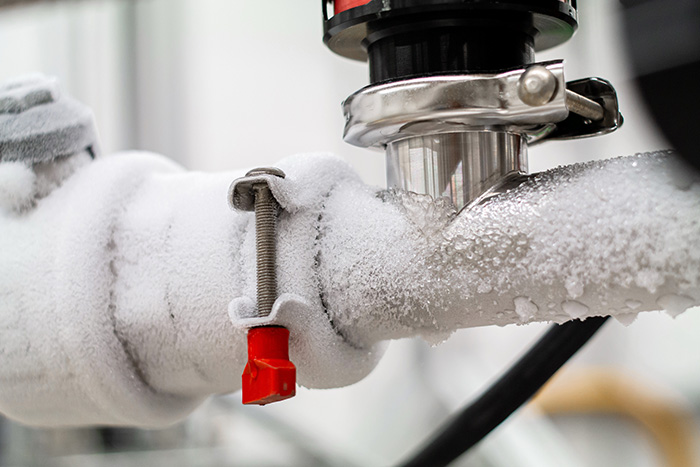Ways to Maintain Your Pipes from Freezing Issues: Essential Advice
Ways to Maintain Your Pipes from Freezing Issues: Essential Advice
Blog Article
Here underneath you can discover some exceptional expertise related to How to prepare your home plumbing for winter weather.

Winter can ruin your pipes, specifically by freezing pipelines. Below's just how to stop it from taking place and what to do if it does.
Intro
As temperature levels decrease, the danger of frozen pipes rises, possibly causing expensive repair services and water damage. Understanding just how to avoid frozen pipelines is critical for house owners in cold environments.
Prevention Tips
Insulating prone pipes
Cover pipes in insulation sleeves or utilize heat tape to secure them from freezing temperatures. Concentrate on pipelines in unheated or exterior locations of the home.
Heating methods
Maintain interior areas adequately heated up, specifically locations with plumbing. Open cupboard doors to permit cozy air to circulate around pipes under sinks.
Exactly how to determine icy pipes
Try to find reduced water circulation from taps, uncommon odors or noises from pipelines, and visible frost on revealed pipes.
Long-Term Solutions
Architectural changes
Think about rerouting pipelines away from exterior walls or unheated locations. Add additional insulation to attic rooms, cellars, and crawl spaces.
Updating insulation
Purchase high-quality insulation for pipes, attics, and walls. Proper insulation helps keep constant temperatures and reduces the threat of frozen pipelines.
Securing Outdoor Pipes
Garden tubes and outdoor taps
Detach and drain pipes garden tubes before winter months. Set up frost-proof faucets or cover outdoor faucets with shielded caps.
Comprehending Frozen Pipelines
What causes pipelines to freeze?
Pipes ice up when exposed to temperatures listed below 32 ° F (0 ° C) for extended periods. As water inside the pipelines freezes, it broadens, putting pressure on the pipeline walls and potentially creating them to burst.
Dangers and problems
Icy pipelines can bring about water system disturbances, home damage, and costly repair services. Burst pipes can flood homes and cause extensive architectural damage.
Signs of Frozen Pipes
Recognizing icy pipes early can avoid them from rupturing.
What to Do If Your Pipes Freeze
Immediate activities to take
If you think icy pipelines, keep taps available to alleviate stress as the ice melts. Use a hairdryer or towels soaked in warm water to thaw pipes gradually.
Final thought
Preventing frozen pipelines requires positive measures and fast responses. By comprehending the reasons, indicators, and safety nets, property owners can shield their pipes during cold weather.
5 Ways to Prevent Frozen Pipes
Drain Outdoor Faucets and Disconnect Hoses
First, close the shut-off valve that controls the flow of water in the pipe to your outdoor faucet. Then, head outside to disconnect and drain your hose and open the outdoor faucet to allow the water to completely drain out of the line. Turn off the faucet when done. Finally, head back to the shut-off valve and drain the remaining water inside the pipe into a bucket or container. Additionally, if you have a home irrigation system, you should consider hiring an expert to clear the system of water each year.
Insulate Pipes
One of the best and most cost-effective methods for preventing frozen water pipes is to wrap your pipes with insulation. This is especially important for areas in your home that aren’t exposed to heat, such as an attic. We suggest using foam sleeves, which can typically be found at your local hardware store.
Keep Heat Running at 65
Your pipes are located inside your walls, and the temperature there is much colder than the rest of the house. To prevent your pipes from freezing, The Insurance Information Institute suggests that you keep your home heated to at least 65 degrees, even when traveling. You may want to invest in smart devices that can keep an eye on the temperature in your home while you’re away.
Leave Water Dripping
Moving water — even a small trickle — can prevent ice from forming inside your pipes. When freezing temps are imminent, start a drip of water from all faucets that serve exposed pipes. Leaving a few faucets running will also help relieve pressure inside the pipes and help prevent a rupture if the water inside freezes.
Open Cupboard Doors
Warm your kitchen and bathroom pipes by opening cupboards and vanities. You should also leave your interior doors ajar to help warm air circulate evenly throughout your home.
:strip_icc()/snow-outdoor-faucet-pipes-4af65d1e5e904fb1aa7bf74071fe5d89.jpg)
Do you appreciate reading up on How To Avoid Freezing Pipes? Post feedback down the page. We'd be delighted to know your reactions about this write-up. We are looking forward that you come back again in the near future. Liked our content? Please share it. Help other people discover it. Thanks so much for your time spent reading it.
Click Here Report this page